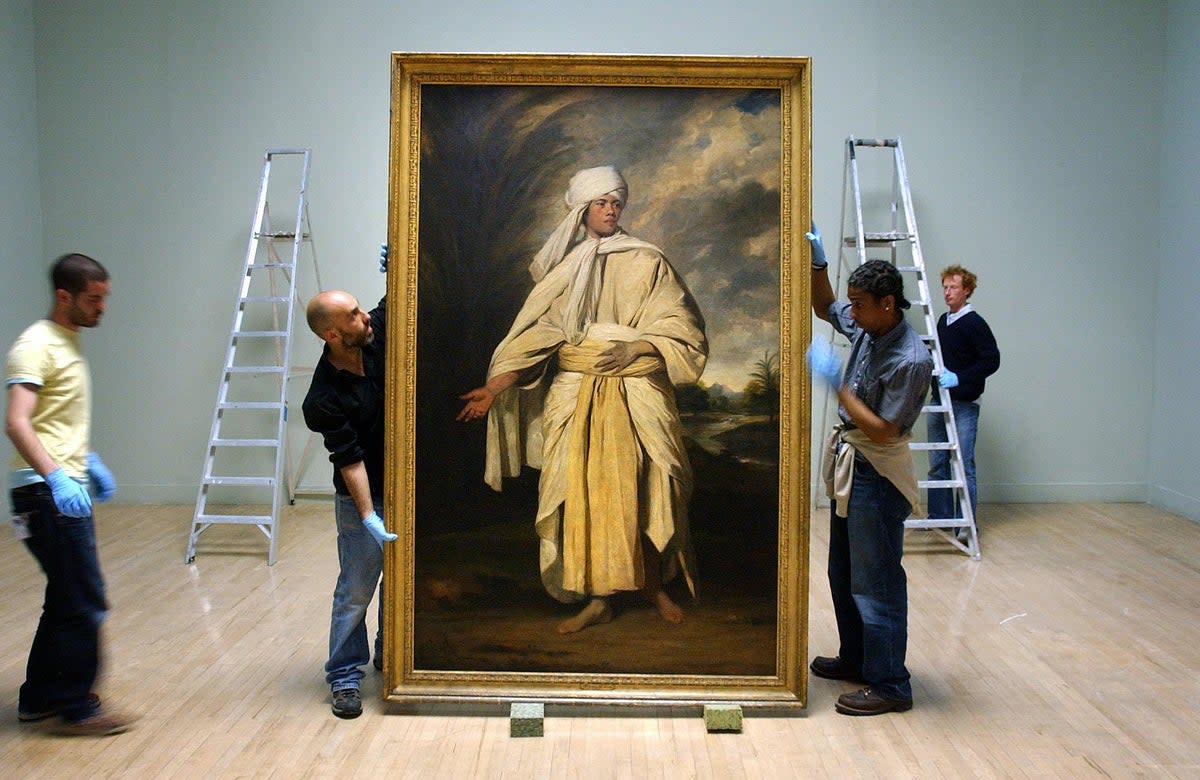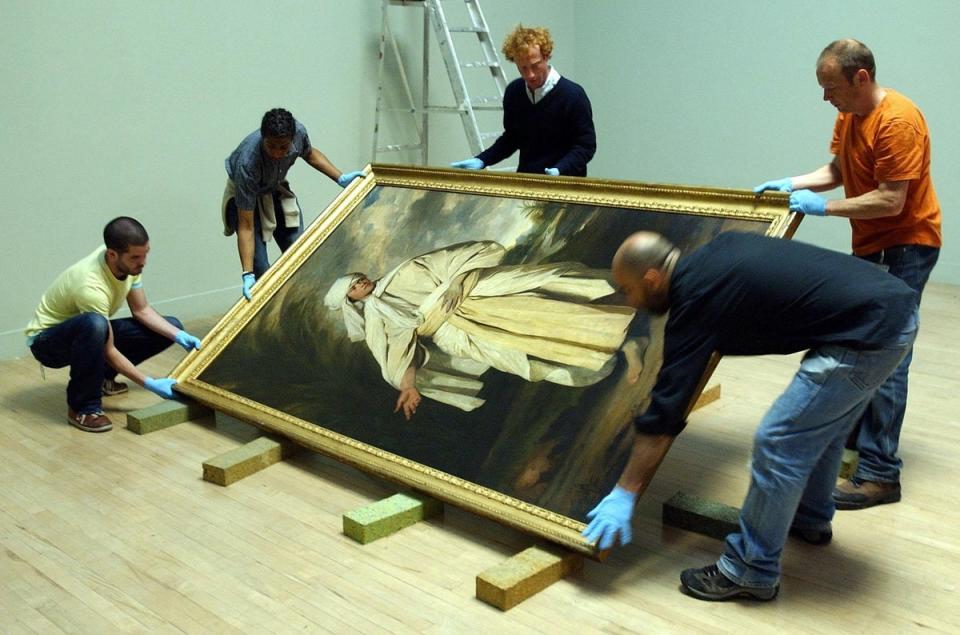National Portrait Gallery granted more time to secure cash to keep £50m painting in UK

The National Portrait Gallery has been granted an extension to come up with the remaining cash to save the £50 million Portrait of Omai.
A temporary export bar imposed on the 18th century painting in March 2022 expired earlier this month but the government has granted an extension to give the gallery time to raise a further £25 million needed to secure the British cultural treasure.
The Independent revealed that the National Portrait Gallery had been in secret talks with the Getty Museum in California to jointly buy the painting, with both groups seeking to secure a last-minute deal.
The government-funded National Heritage Memorial Fund has pledged £10m to help save the work, and Art Fund has given an exceptional grant of £2.5m – the largest in its history.
Many trusts, foundations and individuals, alongside over 1,500 Art Fund members and supporters have donated, and around half the £50m needed to save the work has been raised.
The export bar, granted to works of national importance, has already been extended once after the gallery demonstrated that it was pursuing a viable campaign.
The 1776 portrait was bought in 2001 by Irish horse-stud owner, businessman and former Manchester United owner John Magnier for an estimated £10m. A bid by the Tate Museum to buy the painting from Magnier, spearheaded by Sir David Attenborough, for £12.5m in 2003 failed when he refused to sell.
Arts minister Lord Parkinson said Omai, which depicts a young Polynesian islander who sailed to Britain on one of Captain Cook’s ships, was hugely important: “This stunning painting is impressive for its scale, its attention to detail, and the valuable insights it provides into the society in which Reynolds painted it. I sincerely hope that a UK buyer comes forward to save this iconic painting for the nation.”

On Monday, the National Portrait Gallery confirmed the export bar had been extended by Lord Parkinson until 10 June.
The Portrait of Omai was first sold in 1796, four years after Joshua Reynolds’s death, to the fifth Earl of Carlisle. For more than two centuries it was on display at Castle Howard, as it passed down through the family to the 13th Earl before being sold to Magnier.
It holds significant cultural value as one of the first portraits of a person of colour: the Tahitian man Mai (also known as Omai), one of the earliest Polynesian visitors to Europe, who sailed to Britain with Captain Cook in 1774 following Cook’s first voyage. Omai returned to Polynesia in 1777, accompanying Cook on his third voyage, and probably died there two years later, aged around 26.
He became an instant celebrity, meeting King George III, attending the state opening of parliament and travelling the country with Joseph Banks.
Dr Simon Thurley CBE, Chair of the National Heritage Memorial Fund, said: “The Portrait of Omai is an outstanding work of art from one of the UK’s most eminent artists that embodies great cultural and historical importance.
“We are proud to be supporting the National Portrait Gallery’s campaign to acquire this invaluable example of the UK’s heritage for the nation with one of our most significant pledges of support for a painting. We welcome the news that the government has extended the export bar deadline to allow more time to secure access to the work for UK public benefit.”


